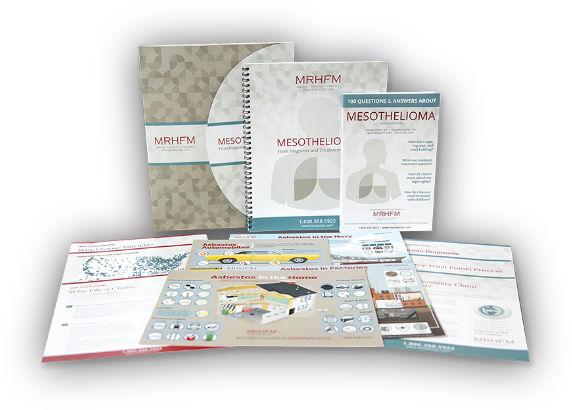Asbestos has been used for thousands of years overseas and for decades in the U.S. Thanks to remarkable heat and fire resistance properties, along with incredible durability, asbestos was used almost exclusively in shipbuilding in America during the 1940s for fireproofing and as an insulator. During this time, the fiber was known as the “magic mineral” or “miracle mineral.” It is estimated that more than 2,700 ships built during this time contained large amounts of the magic mineral and in the years that followed, the fiber would find its way into more than 3,000 consumer and industrial products such as tile, brakes, insulation, ductwork, cement, textiles, roofing, wallboard, and even cosmetic talcum powder.
In the late 1930s, though, German doctors had already identified an “asbestos-related cancer,” but American and British doctors were reluctant publicly criticize what was being called the “magic mineral.” German doctors were not. In fact, the medical community there was so convinced that asbestos had carcinogenic properties, asbestos-related diseases were deemed compensable.
Unfortunately, American and British doctors didn’t fully come to terms with what would soon become an epidemic until the 1960s, when debilitating diseases such as mesothelioma were positively established as being caused by asbestos exposure. By this time, however, it is believed that thousands of people were already dying from or were in varying stages of developing mesothelioma—they just didn’t know it yet.
It wasn’t until 1973, that the Environmental Protection Agency (EPA) issued the first asbestos ban on spray-applied surfacing asbestos-containing material for fireproofing/insulating purposes. More than a decade later, the EPA issued a final rule under Section 6 of the Toxic Control Act (TSCA) banning most asbestos-containing products. Sadly, the rule was vacated in 1991, and remanded by the Fifth Circuit Court of Appeals. As a result, most of the original ban on the manufacture, importation, processing, or distribution in commerce for the majority of the asbestos-containing products originally covered in the 1989 final rule was overturned.
Today, asbestos is still legal in the U.S. and nearly 200 countries around the world. This is despite the fact that there is no clear safe level of asbestos exposure in terms of mesothelioma risk. The latency period between first exposure to asbestos and clinical disease is 20 to 40 years, so thousands of people exposed decades ago continue to be diagnosed with mesothelioma each year. Because asbestos is still legal in the U.S., this disturbing trend will likely continue.
If you have been exposed to asbestos, see your doctor right away. Thanks to advances in medicine, mesothelioma specialists can better evaluate risk factors, administer special blood tests that can help detect the disease sooner, and treat it with better outcomes. This is especially true if the disease is discovered early.
Sources
"Asbestos and Cancer Risk." American Cancer Society. American Cancer Society, Inc., 2017. Web. 30 May 2017.
Beckett, William S. "Shipyard Workers and Asbestos: A Persistent and International Problem." Occupational and Environmental Medicine. BMJ Group, Oct. 2007. Web. 30 May 2017.
Hedley-Whyte, John, and Debra R. Milamed. "Asbestos and Ship-Building: Fatal Consequences." UMJ. The Ulster Medical Society (UMJ), Sept. 2008. Web. 30 May 2017.
Llamas, Michelle Y. "A Brief History of Asbestos: When Did We Learn It Was Toxic?" Constructonomics. Constructonomics, 24 June 2012. Web. 30 May 2017.
"Malignant Mesothelioma Mortality --- United States, 1999--2005." MMWR Weekly. Centers for Disease Control and Prevention (CDC), 24 Apr. 2009. Web. 30 May 2017.
Pogue, Paul F. P. "Could Asbestos Be Lurking in Your Home?" Angie's List. Angie's List, 08 Apr. 2016. Web. 30 May 2017.
"U.S. Federal Bans on Asbestos." EPA. Environmental Protection Agency (EPA), 19 Dec. 2016. Web. 30 May 2017.






